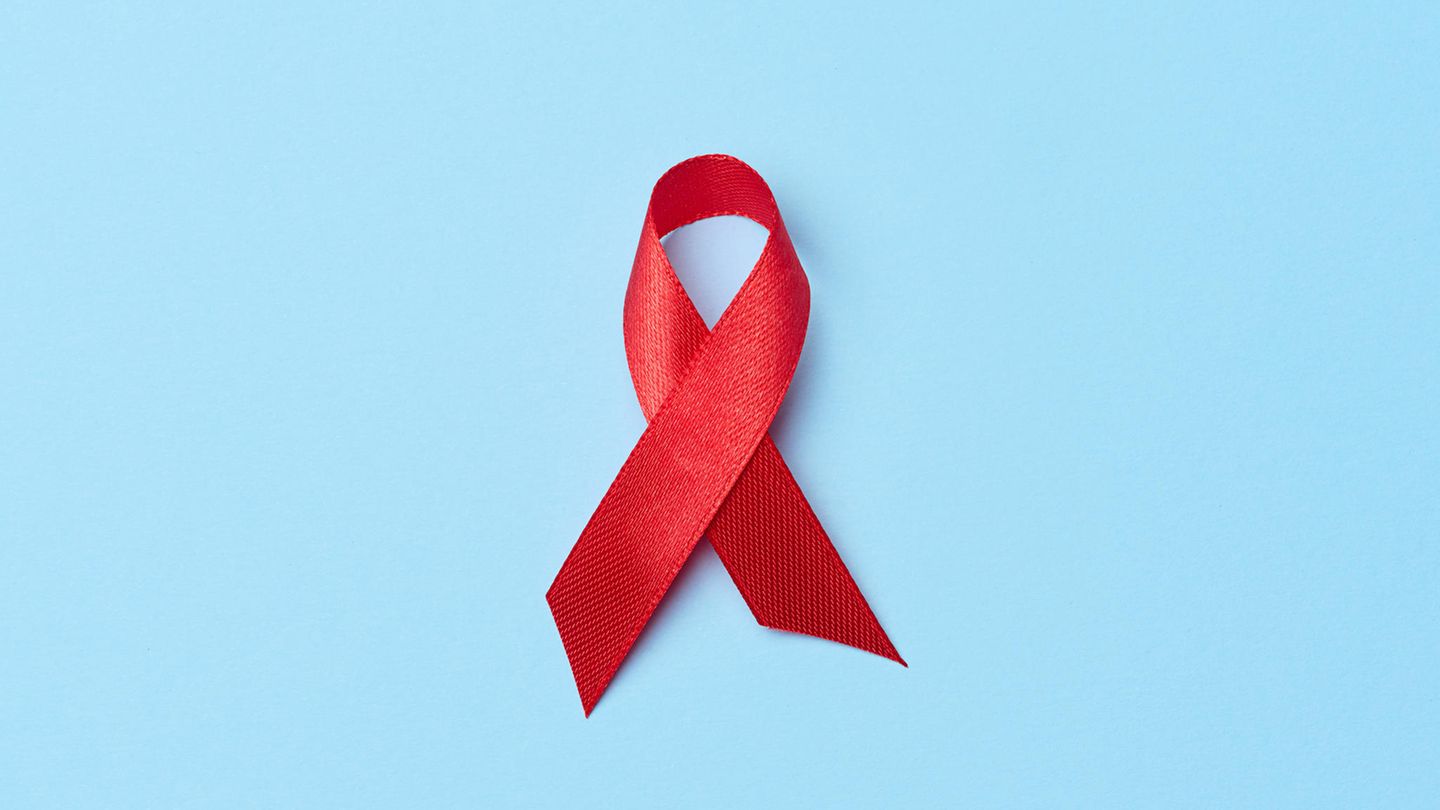The World AIDS Conference ends today in Munich. A conversation with HIV researcher Christian Gaebler from the Berlin Charité about the greatest successes so far in the fight against the virus.
Professor Gaebler, you met Françoise Barré-Sinoussi in Munich. The French virologist discovered the HIV virus in 1983. How did you experience this moment?
That was something very special. Françoise Barré-Sinoussi not only identified the HIV virus with Luc Montagnier over 40 years ago, she also fought against HIV and AIDS her entire life. An impressive personality – as a person and as a researcher. When she received the Nobel Prize in 2008, she shared it with the German virologist Harald zur Hausen, who discovered that human papilloma viruses (HPV) can cause cervical cancer.
You had a special appearance in Munich: you presented the data of the second Berlin patient who is considered cured after an HIV diagnosis. How did you manage that?
So far, there are only seven of these patients worldwide. The method was the same for all of them: a stem cell transplant. They receive this because they have not only been diagnosed with HIV, but also with blood cancer. A stem cell transplant is necessary if, for example, chemotherapy is not enough to cure the blood cancer. For people with HIV, attempts are made to find a donor whose immune system is not susceptible to HIV. This is the case for around one percent of people in Germany. In these people, a receptor on the surface of immune cells has been altered, which the HIV virus normally docks onto in order to penetrate the cell. The mutation prevents entry. This kills two birds with one stone: leukemia and HIV.
© Charité/Sebastian Tromm
To person
HIV researcher Prof. Christian Gaebler is a working group leader at the Department of Infectious Diseases and Intensive Care Medicine at the Charité and the Berlin Institute of Health at the Charité
How is your patient of the other six?
They had also been looking for a donor with the mutation for him. In order for the genetic change to really work, both copies of the gene – we inherit one from the father and one from the mother – should have the mutation. But no one was found. So they took a donor with a “half” mutation, with only one copy of the gene – even though they couldn’t assume that this would be a cure. In the end, it worked. The patient stopped taking his HIV medication of his own accord and the virus is no longer detectable. That was almost six years ago.
This is surprising because if people with HIV stop their treatment, the virus returns within a few weeks or months. In theory, a single infected cell is enough to cause the disease to flare up again.
That’s true, and we were surprised too – and have to rethink our old theories. Perhaps the mutated receptor has less influence than we previously assumed. Another man, the “Geneva patient”, was even transplanted with stem cells without any mutation – and he too is considered cured. The new, transplanted immune system probably has a much greater effect – by destroying the last HIV-infected cells of the patients that are still hiding over time.
Why are we still unable to cure HIV on a large scale?
Retroviruses such as HIV have learned to evade our immune system to perfection over millions of years. They use a perfidious trick to survive and multiply by incorporating their genetic information into the genetic blueprint of immune cells – and precisely into the immune cells that are actually supposed to recognize and fight pathogens. As long as the virus stays quiet, the immune system will not find it. In addition, the virus only attacks very few immune cells. This makes potential therapy a bit like looking for a needle in a haystack. In the end, however, a needle or a virus is enough to reactivate the disease. Both of these things together make a cure so difficult.
All the more amazing that in Berlin worked the second time.
Yes, that’s true, and now we need to quickly find out how the donor immune system managed to find the virus’s secret hiding place and destroy it. Then we can copy this mechanism, use it therapeutically – and hopefully one day make it available to the 40 million people living with HIV in the world. We need to find an alternative to stem cell transplantation, which would be far too risky for people without blood cancer. That won’t happen tomorrow, but we definitely can’t stop working now; we’ve already made so much progress.
Seven cases out of 40 million people with HIV worldwide is less than a drop in the ocean. What other strategies are there to get this unimaginably high number under control?
If we want to end this HIV epidemic, we need three things. First is HIV prevention, which means we have to prevent new infections. Then we need access to effective treatment for everyone. People who are well treated cannot transmit the virus. So far, only 75 percent of the 40 million people with HIV are receiving appropriate treatment. And we need to find those who do not yet know they are infected with HIV more quickly. With simpler tests. And by actively combating and ending discrimination and stigmatization of people with HIV.
The World AIDS Conference 2024 in Munich will also be remembered because new data show that the active ingredient lenacapavir can prevent all infections.
That’s right, we saw that lenacapavir prevented 100 percent of new HIV infections in a clinical study. That’s a sensation! In the other two study arms, in which the test subjects from South Africa and Ghana took tablets, 16 and 39 new infections occurred. You have to remember to take tablets every day, but you don’t forget a shot. We’ve known about the drug since 2022, and it’s approved to treat an HIV infection where all other treatments have failed. It prevents the virus from multiplying. Currently, 1.3 million people become newly infected with HIV every year. By using existing preventive drugs and lenacapavir more widely in the future, we could significantly reduce new infections.
Also in Germany People are still getting infected, in 2023 there were about 2200 people – that’s roughly half compared to 1985, when the number was at its highest with 5500 new infections. Why are there still so many?
The number of infections is rising especially in groups that are at increased risk of becoming infected, such as sex workers or drug users. These groups would benefit from preventive measures, namely the medications that prevent infection. We must continue to educate and facilitate access to preventive measures and regular testing. The clear goal should be to have no more new infections!
What do you particularly remember from the past few days?
The World AIDS Conference brings together 10,000 people who all have one goal: to better understand the HIV virus and to end the HIV/AIDS epidemic. When you see the enthusiasm with which people from all over the world approach this, it motivates me immensely to continue working together towards this goal. A very inspiring event.
Source: Stern
I’m Caroline, a journalist and author for 24 Hours Worlds. I specialize in health-related news and stories, bringing real-world impact to readers across the globe. With my experience in journalism and writing in both print and online formats, I strive to provide reliable information that resonates with audiences from all walks of life.




